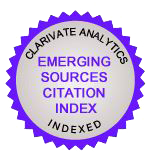Spanish and Ukrainian ethnonyms in comparison with other European languages: ethnolinguistic and culturological aspects
DOI:
https://doi.org/10.30827/meslav.vi20.21145Abstract
This article proposes to analyse, interprete and qualify, from historical (including, to some extent, etymological in certain cases, since many Slavic etnonyms, just as those, which are Romance, Germanic etc., have another origin), semantic, stylistic, functional and sociolinguistic points of view, certain ethnonymic names, word-combinations, derivatives, and phraseologisms in Spanish (by way of tertium comparationis), Ukrainian and other languages (Slavic, Germanic, Romance), as well as demonyms of an expressive nature, in particular nicknames, derogatory denominations, and ethnophaulisms, which reflect, by means of their lingual (origin, formation etc.) and extralingual (perception at a psychological level), a range of ethnocultural features and, in a nutshell, the so called national or ethnic stereotypes. Secondary (mainly metonymic) meanings of many ethnic names are illustrative samples of deonymization. There is also a great number of colloquial peoples’ names and phraseological units with ethnonymic components, which refer to peculiar features of ethnic mentality (closely related to the linguistic picture of the world) and are manifested in a particularly significant way when comparing material of various and different languages serving as a technically essential method for this study. The comparison mentioned demonstrate also various consequences of language contacts, historical and modern, that have become rather intensive at present.
Downloads
Downloads
Published
How to Cite
Issue
Section
License

CC BY-SA: This license allows reusers to distribute, remix, adapt, and build upon the material in any medium or format, so long as attribution is given to the creator. The license allows for commercial use. If you remix, adapt, or build upon the material, you must license the modified material under identical terms.
CC BY-SA includes the following elements:
BY ![]() – Credit must be given to the creator
– Credit must be given to the creator
SA ![]() – Adaptations must be shared under the same terms
– Adaptations must be shared under the same terms
Authors who publish with this journal agree to the following terms:
1. Authors retain copyright and grant the journal right of first publication with the work simultaneously licensed under a Creative Commons Attribution License that allows others to share the work with an acknowledgement of the work's authorship and initial publication in this journal.
2. Authors are able to enter into separate, additional contractual arrangements for the non-exclusive distribution of the journal's published version of the work (e.g., post it to an institutional repository or publish it in a book), with an acknowledgement of its initial publication in this journal.
3. Authors are permitted and encouraged to post their work online (e.g., in institutional repositories or on their website) prior to and during the submission process, as it can lead to productive exchanges, as well as earlier and greater citation of published work (See The Effect of Open Access).













